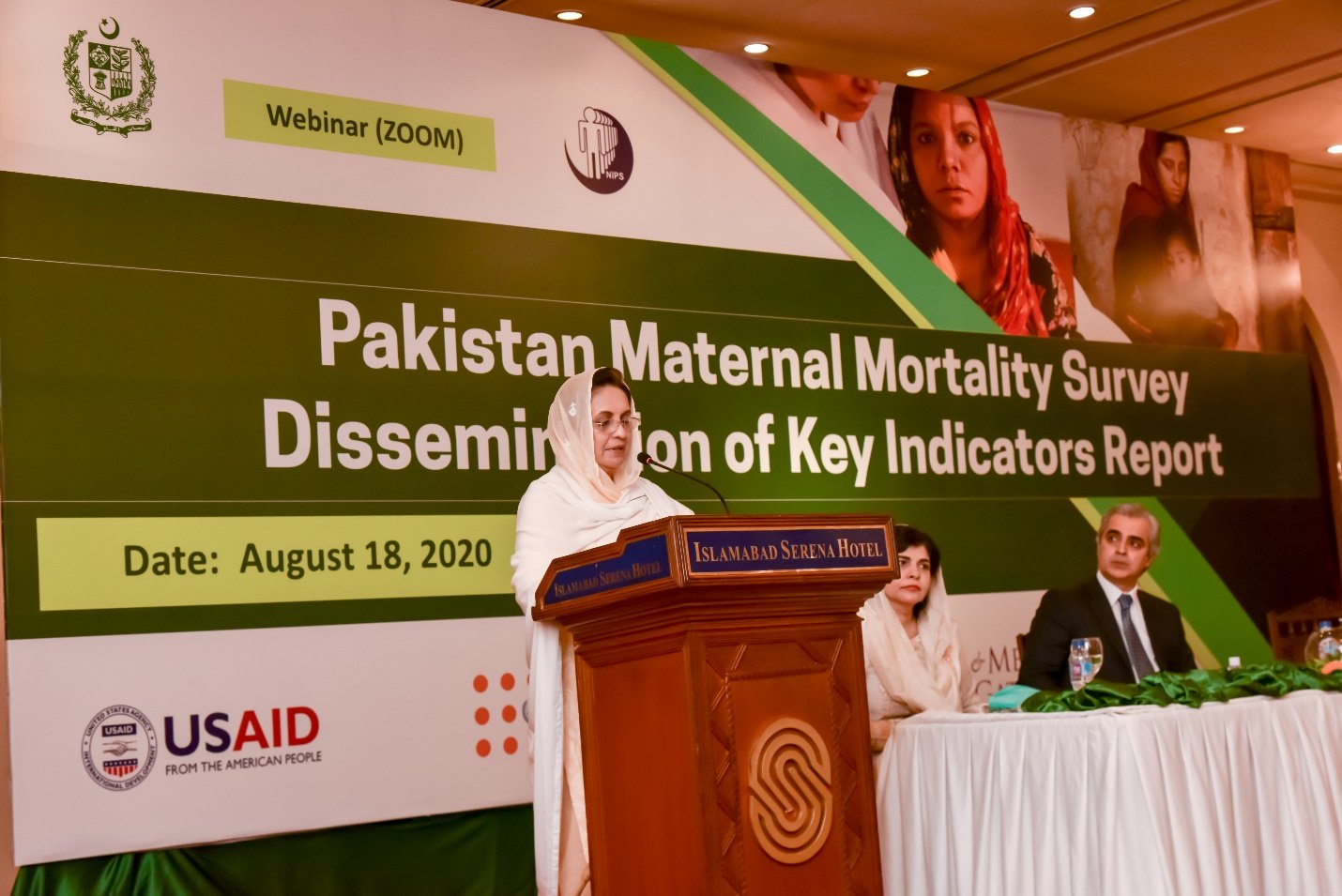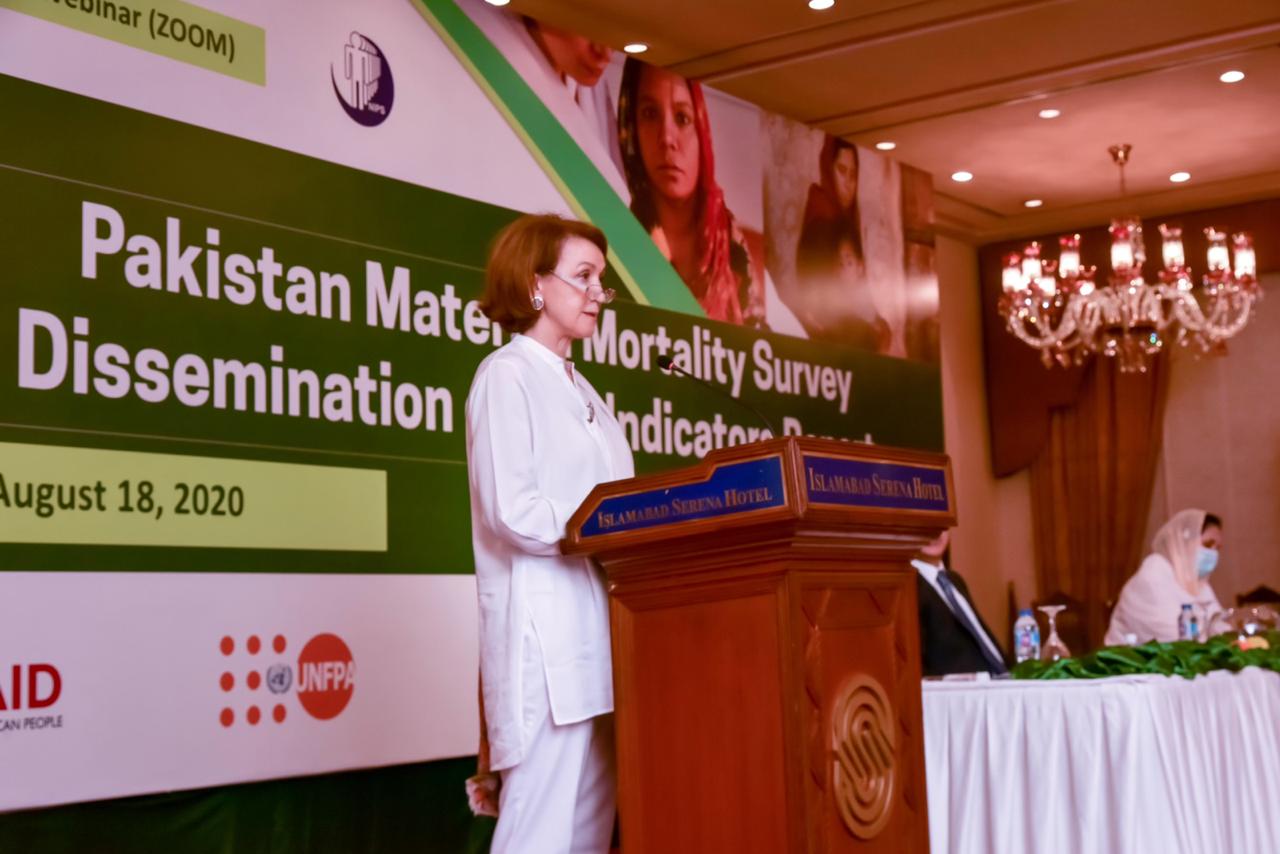Maternal mortality decreased to 186 deaths per 100,000 live births
Maternal mortality ratio (MMR) in Pakistan has decreased from 276 deaths per 100,000 live births as per Pakistan Demographic and Health Survey of 2006-7 to 186, according to the latest Pakistan Maternal Mortality Survey (PMMS). The key findings of the first exclusive nationwide survey were released today at a Webinar in Islamabad organized by the National Institute of Population Studies (NIPS).
The findings highlighted that improvements in health services in the last decade and enhanced awareness and utilization of antenatal and postnatal care by women are likely to have contributed to the overall decrease in the MMR.
The maternal mortality ratio (MMR) is lowest in Punjab (157 per 100,000 live births), followed by Khyber Pakhtunkhwa (165 per 100,000 live births), Sindh (224 per 100,000 live births), and Balochistan (298 per 100,000 live births). The MMR is 104 in Azad Jammu and Kashmir, and 157 in Gilgit-Baltistan. The ratio is also 26pc higher in rural areas - 199 deaths - than urban areas - 158 deaths

Dr Nausheen Hamid, Parliamentary Secretary of National Health Services (NHS), speaking at the launch event. UNFPA Pakistan
Speaking at the launch, Parliamentary Secretary of National Health Services (NHS) Dr Nausheen Hamid said that improving access to health facilities, particularly for women and other vulnerable segments of society, is a priority for the government.
She said that in order to identify gaps in services and facilities at national and regional levels, it was necessary to have access to reliable data that enables executing organisations to implement remedial measures. She said the government encourages evidence-based research work to provide a direction
“With a six-fold increase in our population since independence, there are challenges of socioeconomic development. The situation is aggravated by the urbanisation process. The size of the population and the urbanisation process obviously place pressure not only on health facilities but also on other development initiatives. But let me assure you that the government is determined to deal with these challenges by prioritising and ensuring fair distribution of resources,” Dr Hamid said

Ms. Lina Mousa, UNFPA Representative, Pakistan, speaking at the Launch event. UNFPA Pakistan
United Nations Population Fund Representative Ms. Lina Mousa said: “The results are encouraging and provide reliable data for policy development and programme planning for maternal and child health.”
“Though there is a decline in the maternal mortality ratio compared to 276 per 100,000 in 2006/07, Pakistan has to do more for women who are least likely to receive adequate healthcare, residing in remote areas with lower numbers of skilled birth attendants or health facilities, and strive to achieve universal maternal health coverage,” she added.
Department for International Development (DFID) Country Director Annabel Gerry said she was proud to support an important study to assess the levels of maternal mortality in Pakistan.

An improved access to family planning services is at the heart of the UK’s development agenda in Pakistan. Accurate data and through our continued technical assistance to Punjab and KP, we will achieve the target of reducing maternal mortality rate in the country,” she said.
The United States government congratulates Pakistan on its commendable accomplishment in reducing maternal deaths by one-third,” said acting US Agency for International Development (USAID) Mission Director Mr. Clay Epperson.
He added: “It reflects the impact of the partnership between the government of Pakistan, USAID and other development partners, as well as the civil society and private sector to ensure that pregnant women deliver in the presence of a skilled health professional.


